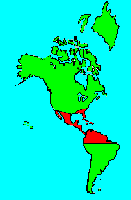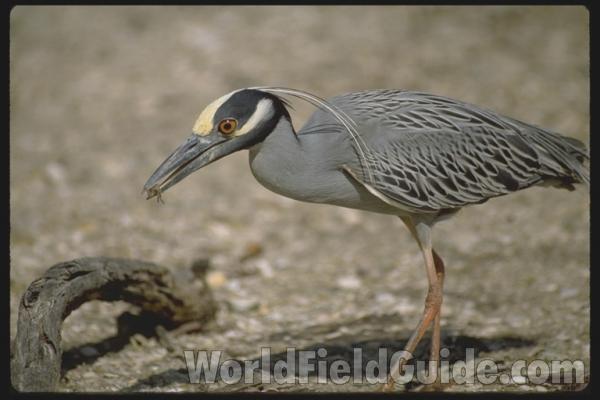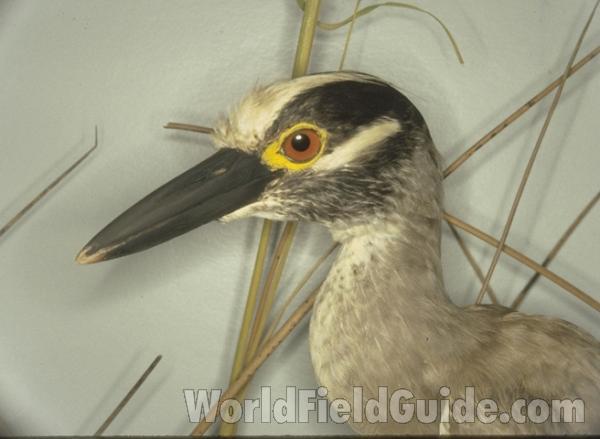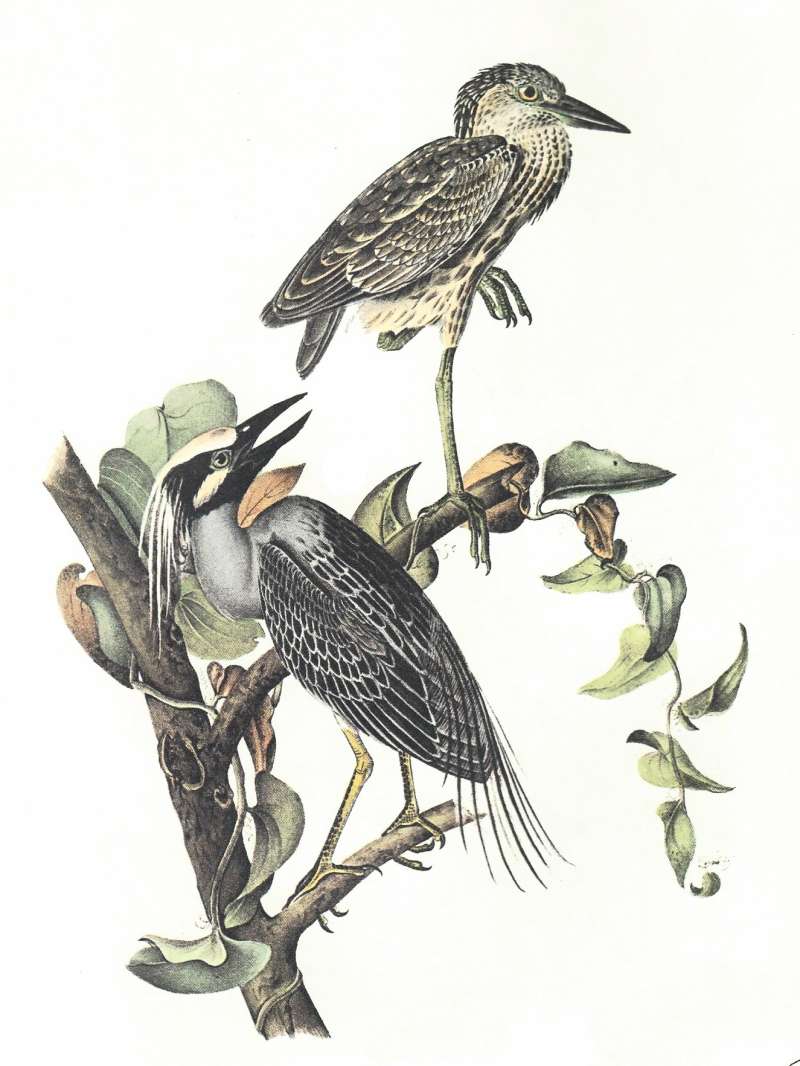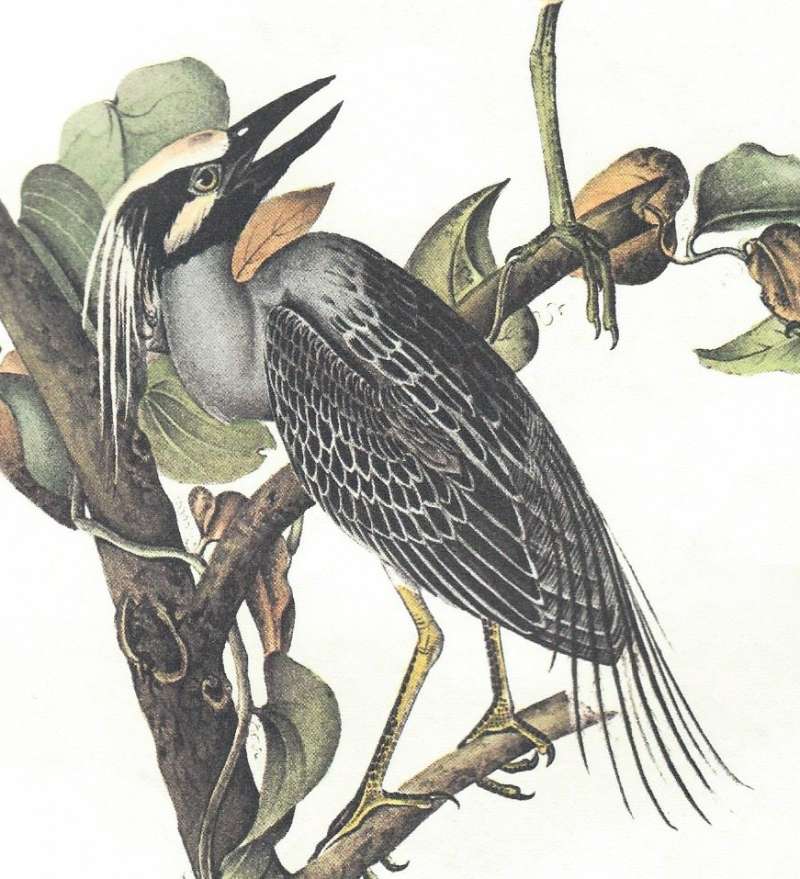SPECIES INFO
Yellow Crowned Night Heron (Nycticorax violaceus to Nyctanassa violacea) is found in the southeastern United States and into the Neotropical region. Yellow crowned night heron can be found in coastal areas of Mexico south through Central America to the coastal areas of western South America south to Ecuador and the eastern coastal areas almost to Argentina. The gray coloration, white and black head, and short legs help identify this bird which measures twenty-four inches.
There are 5 named subspecies. The nominate subspecies is found in east central North America and eastern Central America. The subspecies bancrofti is found in Baja California, Socorro Islands, and the Caribbean. The subspecies caliginis is found in Pacific (western) Panama to western Colombia to northwestern Peru. The subspecies cayennensis is found on the Atlantic Coast of Panama to northern Colombia and east through Venezuela and the Guyanas to northwestern Brazil. The subspecies pauper is found on the Galapagos Islands.Nyctanassa genus of night herons contains a single species. This 21-24 inch bird has a black and white head with a yellow cape and a gray neck and gray breast. This genus is found from the southeastern United States south into South America.
Bittern and Heron group (Family Ardeidae) has over 60 species of birds with worldwide distribution. The unequal vertebrae in the neck causes many species of herons to carry their neck in a curved position. Long legs adapted to wading and feeding in marshy areas is typical of most herons of the order.
There are 65 species in this family with another 11 subspecies that can be given full species status.
The genera Egretta, Pilherodius, Ardea, Casmerodius, Mesophoyx, Bubulcus, Ardeola, Butorides, Agamia, Nyctanassa, Nycticorax, Gorsachius, Cochlearius, Tigrisoma, Zonerodius, Tigriornis, Zebrilus, Ixobrychus, Dupetor, Syrigma, and Botaurus belong here.
Stork and Heron group (Order Ciconiiformes) is made up of birds with long legs that usually are found near the shores of bodies of water. Their long legs let them wade through the shallow water looking for food. Fossil remains indicate these birds have been around for at least 100 million years. There are about 114 living species in this group.
Aves contains about 8,650 different species of living birds known to science. Each year about one new species is discovered in some remote rain forest or remote island. In addition, scientists have been raising many subspecies to full species status which may raise the species count to 10,000. Birdlife recognizes 10,027 species as of 2011.
However, each year about one species goes extinct. The rate of extinction is increasing, and the rate of new discovery is decreasing, so that the number of bird species will soon begin to decline rapidly. Although different taxonomists would organize the birds differently, there are approximately twenty-seven orders of birds. These orders are broken down into about one hundred and fifty-five different families.
Recent research of the genetic structure of some of the shore birds and owls would indicate that the present organization of orders and families should have some modification.
The birds are a worldwide group of animals that are characterized by having the front limbs modified into wings that are used for flying. Perhaps the most unique feature of the birds is the feathers. These feathers are made up of a central support called a quill and a series of small filaments that are hooked together as barbs.
For many years it was believed that Archaeopteryx discovered in Bavaria was the oldest bird from about 150 million years ago. However, in l986, Sankar Chattterjee, a Texas paleontologist, reportedly discovered a bird in the genus Protoavis that lived about 225 million years ago.
When this project was begun in 1978, we used Austin & Singer for bird taxonomy. Since then, we have adopted many changes, but have kept some older concepts that are still found widely in the literature. Recently, we have used Clements and Howard & Moore. Very recently, we have used Monroe and Sibley for the higher taxonomy of the perching birds.
Backboned Animals (Phylum Chordata) are the most advanced group of animals on earth. These animals are characterized by having a spinal cord or backbone. Most members have a clearly defined brain that controls the organism through a spinal cord. Fish, amphibians, reptiles, birds, and mammals are in this phylum.
Currently, some taxonomists believe that the fish should be divided into two groups (sharks and regular fishes) and that there are some other primitive groups in the phylum such as hagfish or lampreys.
Animal Kingdom contains numerous organisms that feed on other animals or plants. Included in the animal kingdom are the lower marine invertebrates such as sponges and corals, the jointed legged animals such as insects and spiders, and the backboned animals such as fish, amphibians, reptiles, birds, and mammals.
